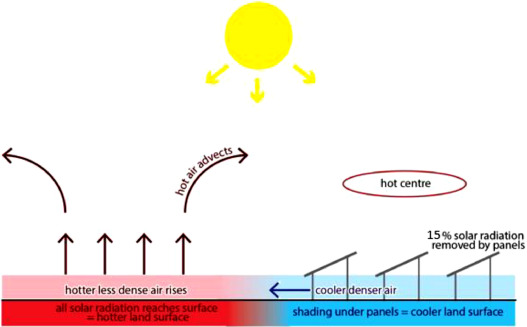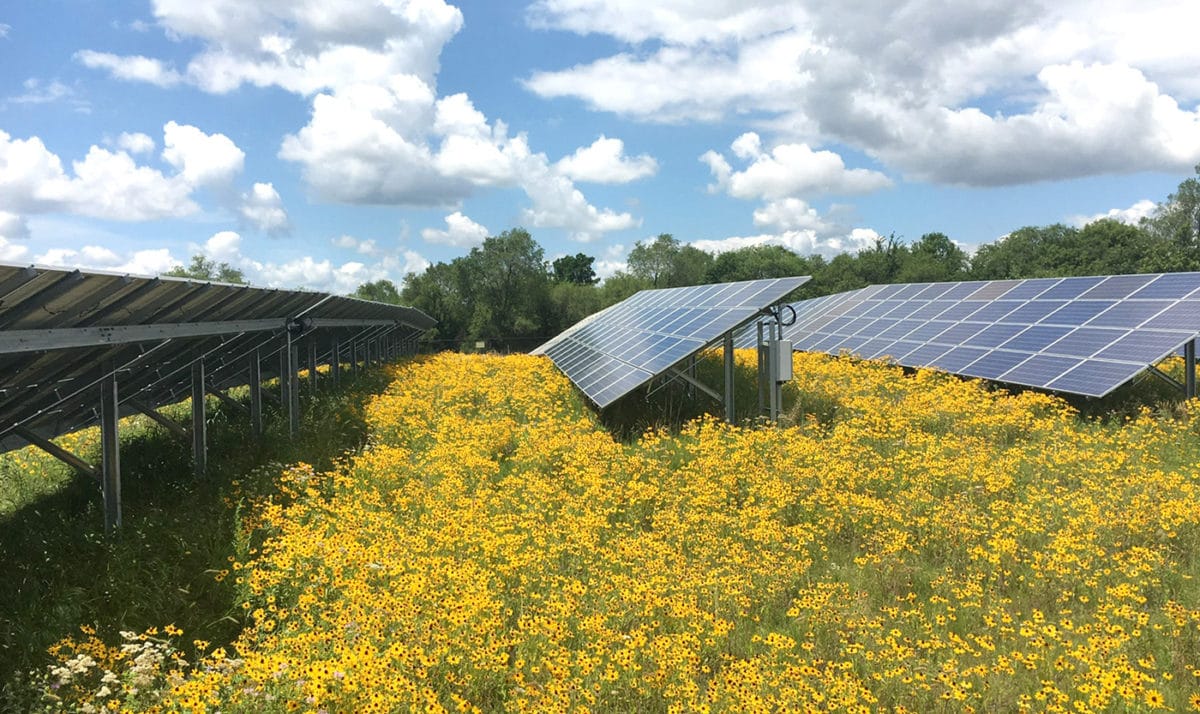From pv magazine International
Scientists from the University of California-Davis, Lancaster University, and Ludong University in China published research showing that utility-scale solar facilities can have a cooling effect not only on the land covered by the array, but also in the surrounding area.
Solar facilities were found to produce “cool islands” that extend up to 700 meters from the boundaries of the arrays. Land surface temperature was reduced by up to 2.3 degrees Celsius (3.6 Fahrenheit) at 100 meters away; the cooling effects tapered off exponentially to 700 meters.
Studies of two solar parks–the 300 MW Stateline project in California and the 850 MW Longyangxia project in China–were conducted using Landsat satellite images, an approach the researchers said had not previously been applied to solar. The study team compared land surface temperatures around solar facilities before and after they were built. The Stateline solar park measurements were supplemented with ground-collected data.
The researchers hypothesized that the cooling was caused by a combination of shading and insulating the land surface, and by the direct conversion of energy into electricity by the solar panels.

The study authors concluded the effect could have impact on local ecological processes. Productivity, decomposition, and ultimately the carbon balance could be skewed by the cooling. The scale of effect depends on location, and impacts could range from positive, negative, or inconsequential based on local ecosystems.
For example, in California’s Mojave Desert, lower surface temperatures leads to reduced germination rates and a loss of biodiversity. But, in the Tibetan Plateau, lower surface temperatures could potentially reduce the amount of methane lost to the atmosphere, said the scientists.
“This heightens the importance of understanding the implications of renewable energy technologies on the hosting landscape – we need to ensure that the energy transition does not cause undue damage to ecological systems and ideally has net positive consequences on the places where we build them,” said the research, which was published in Renewable and Sustainable Energy Transition.
The studies were conducted in arid locations. The researchers said that further study is needed to determine the effect in more temperate climates.
This content is protected by copyright and may not be reused. If you want to cooperate with us and would like to reuse some of our content, please contact: editors@pv-magazine.com.









By submitting this form you agree to pv magazine using your data for the purposes of publishing your comment.
Your personal data will only be disclosed or otherwise transmitted to third parties for the purposes of spam filtering or if this is necessary for technical maintenance of the website. Any other transfer to third parties will not take place unless this is justified on the basis of applicable data protection regulations or if pv magazine is legally obliged to do so.
You may revoke this consent at any time with effect for the future, in which case your personal data will be deleted immediately. Otherwise, your data will be deleted if pv magazine has processed your request or the purpose of data storage is fulfilled.
Further information on data privacy can be found in our Data Protection Policy.